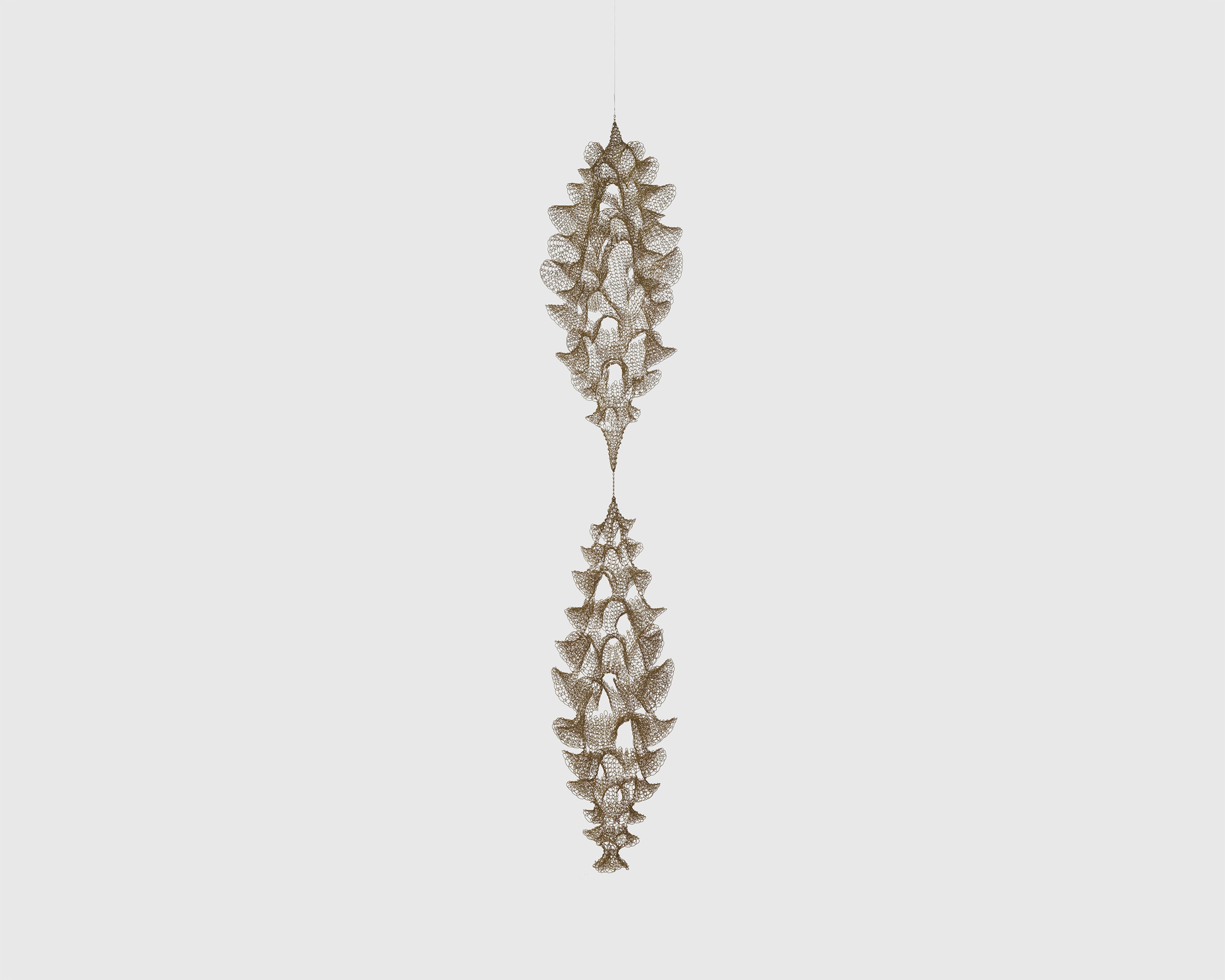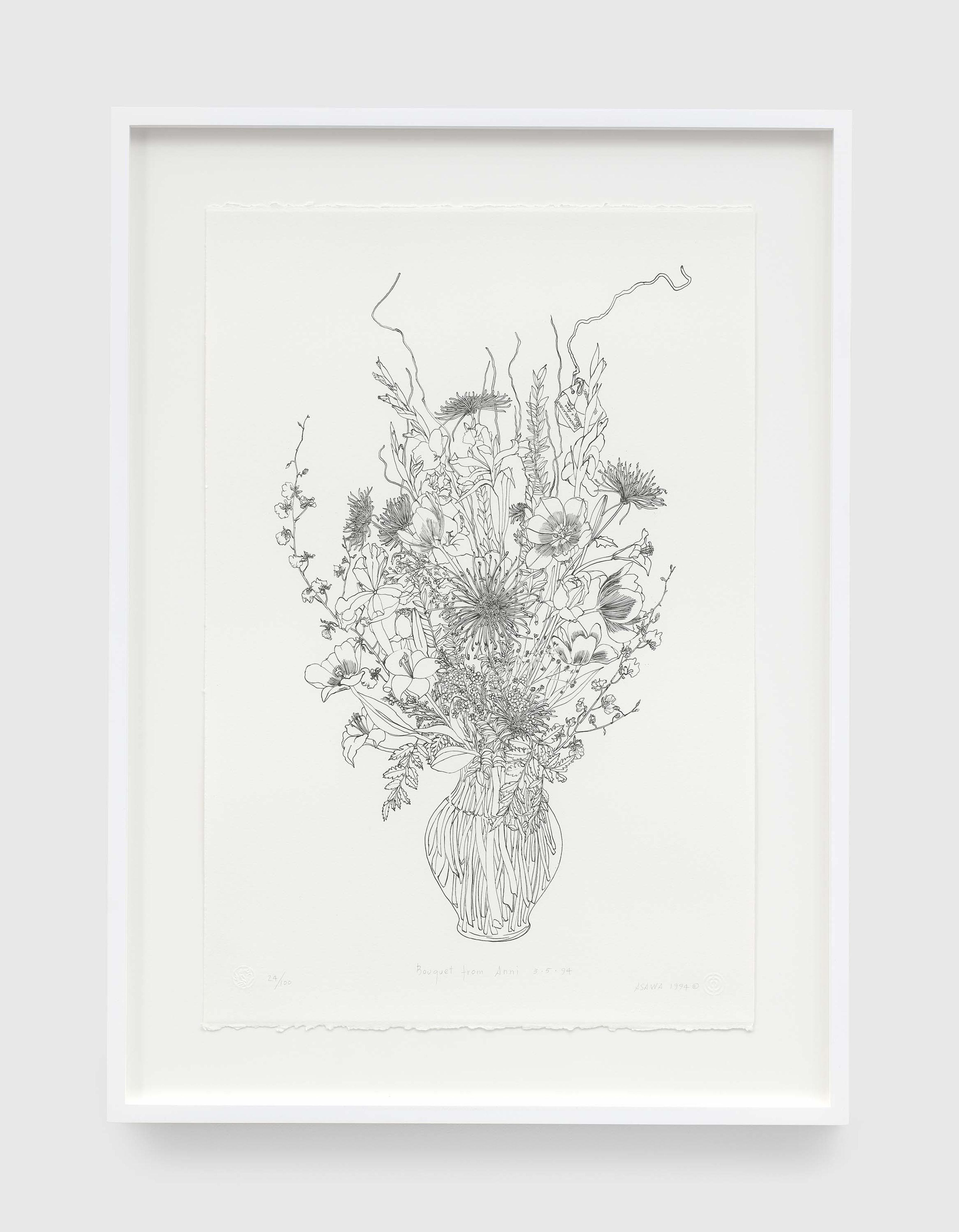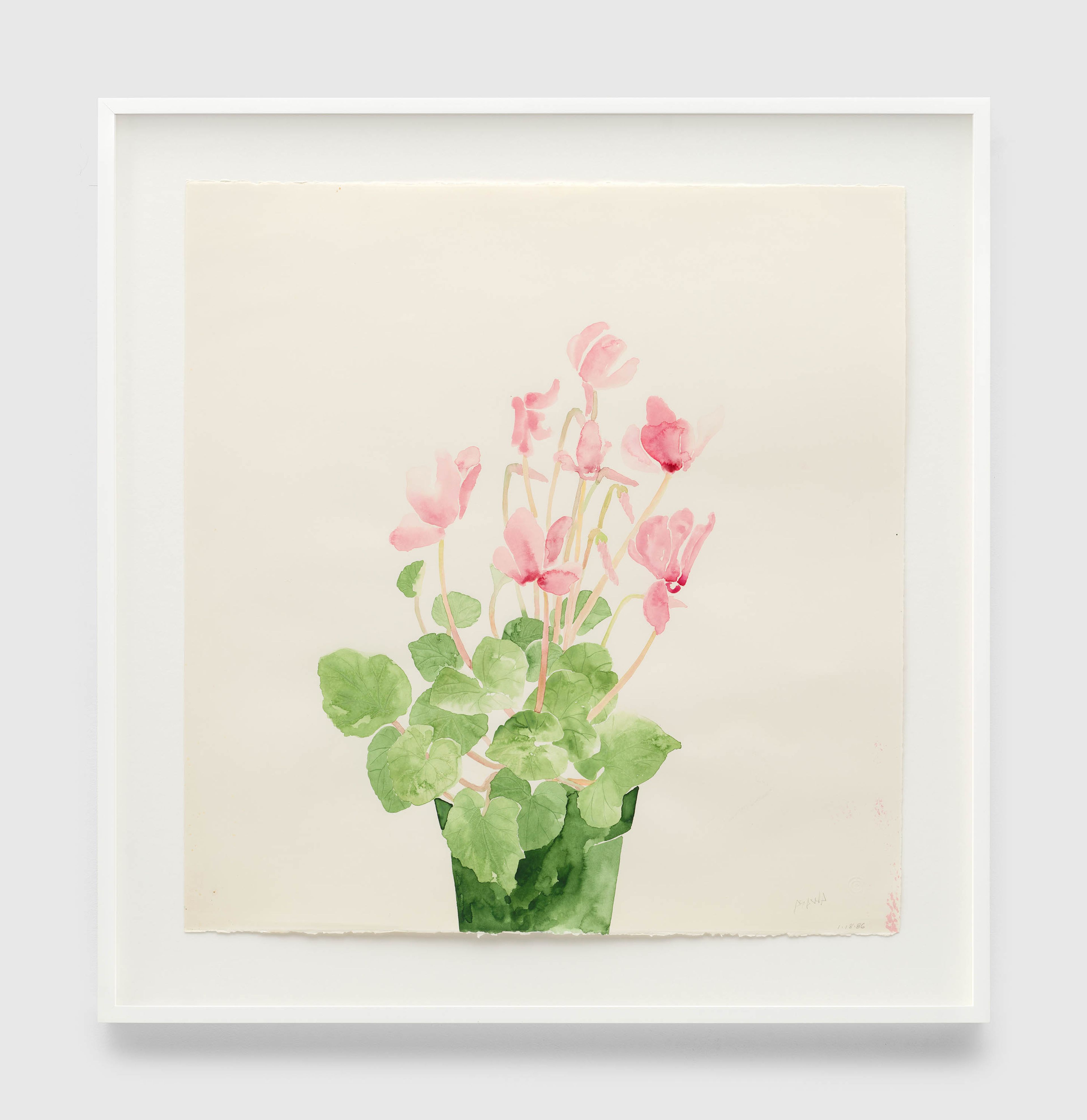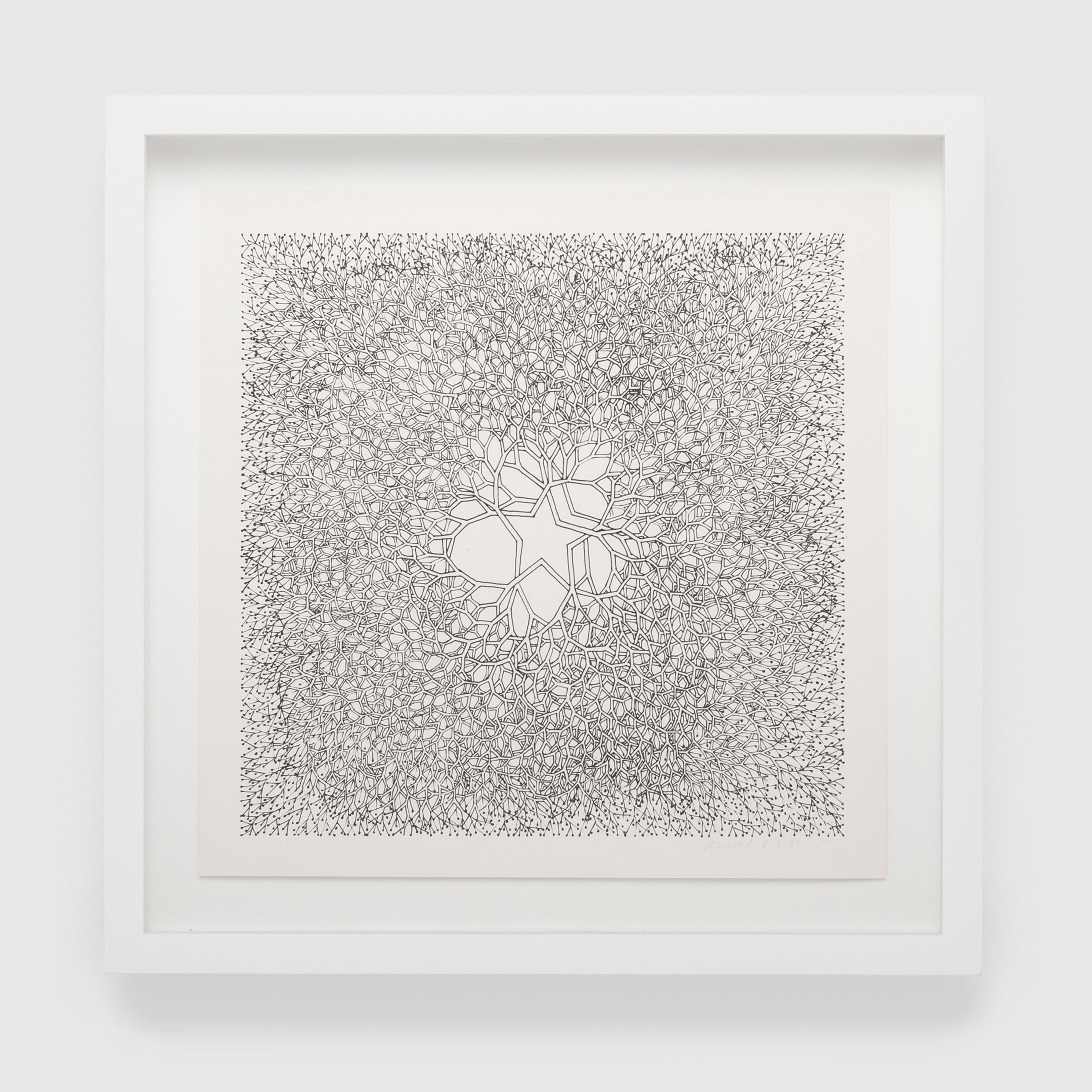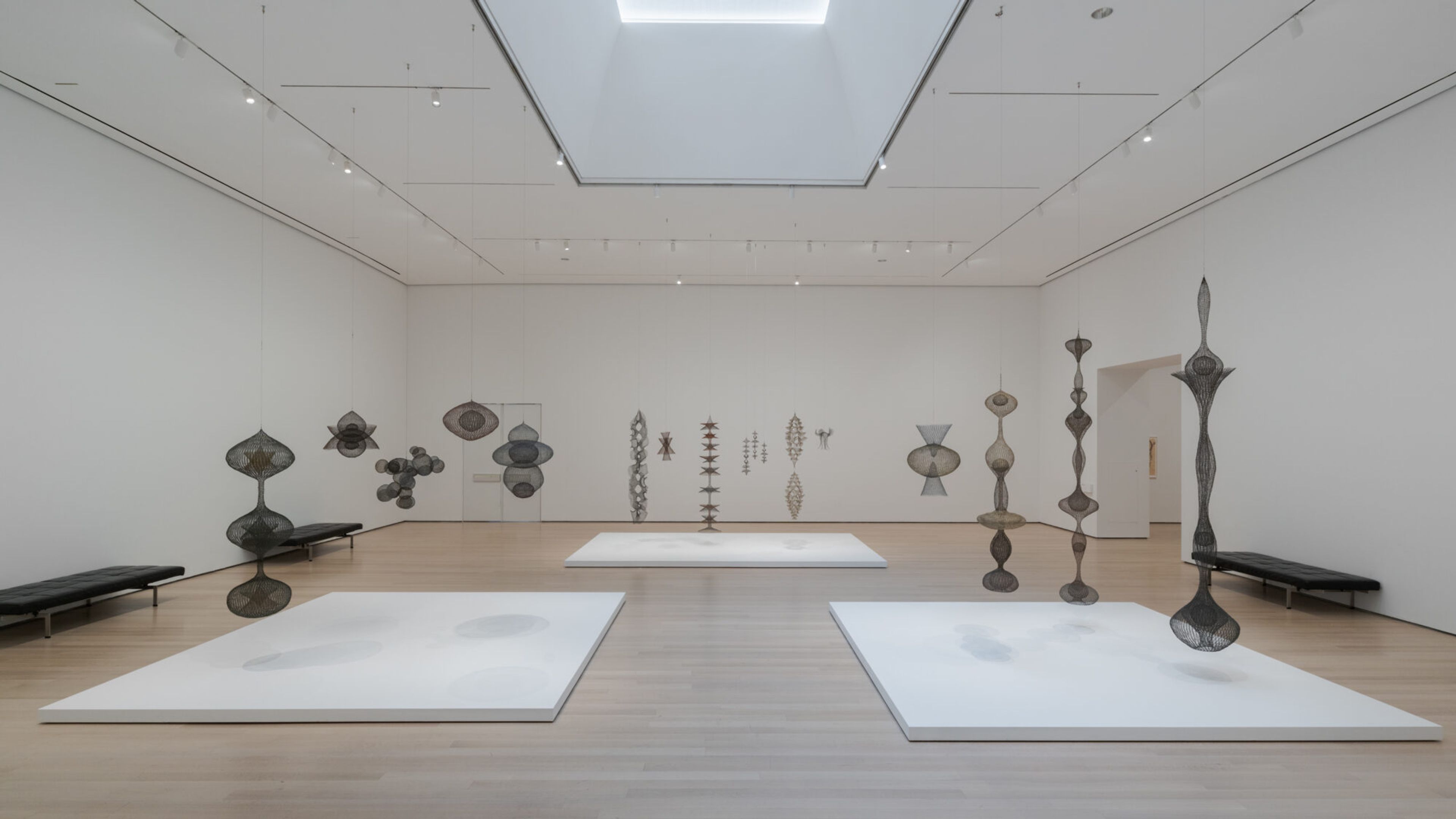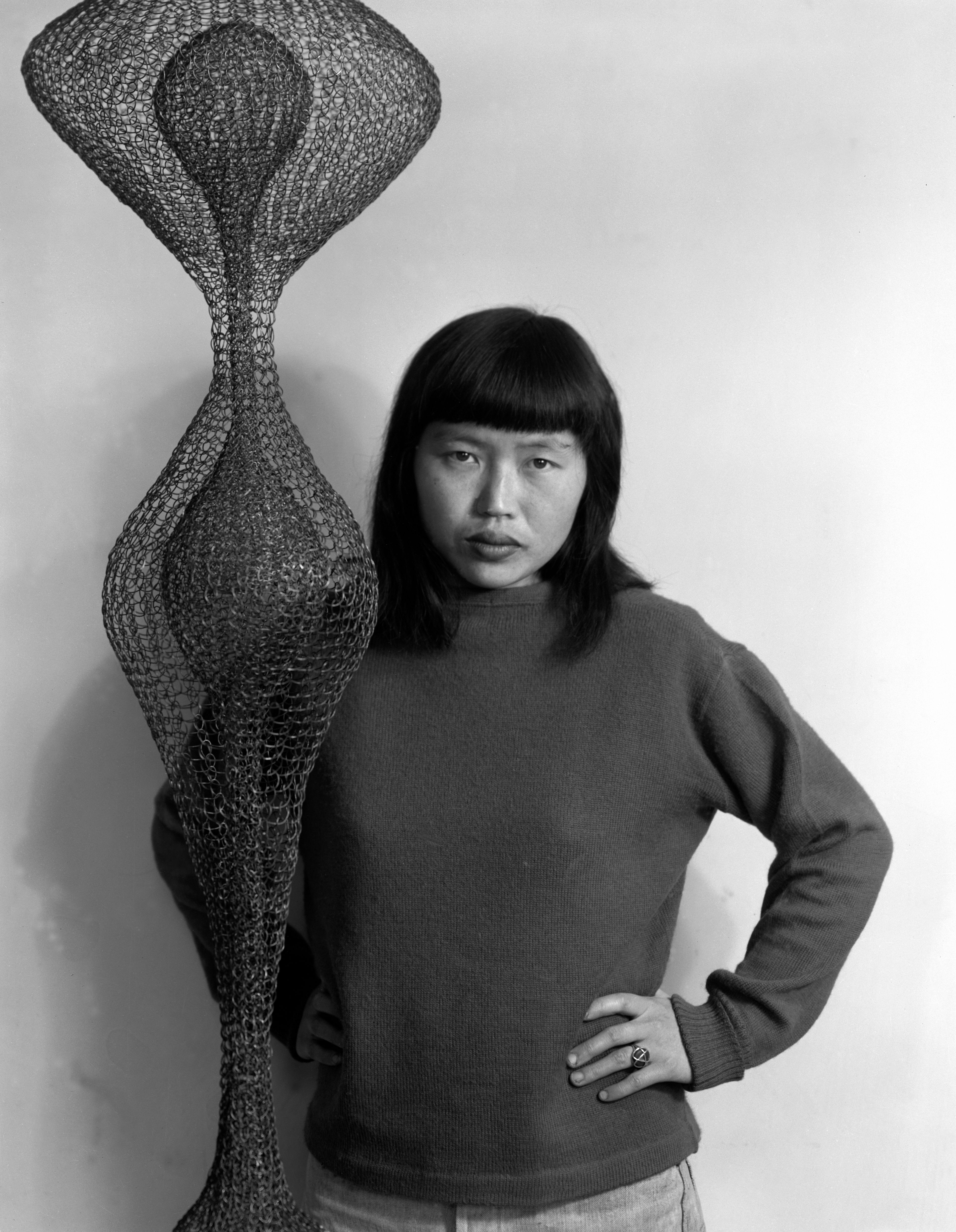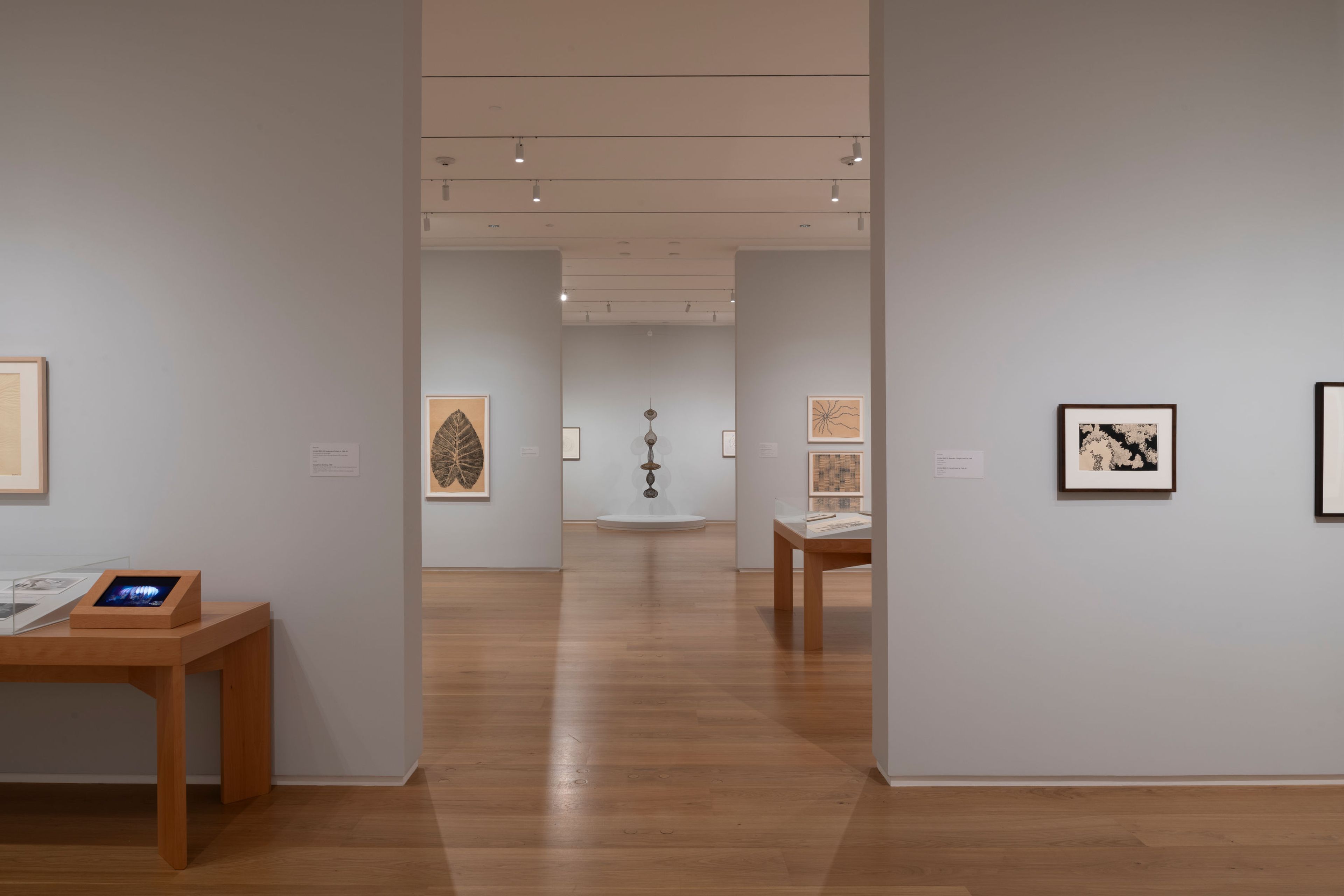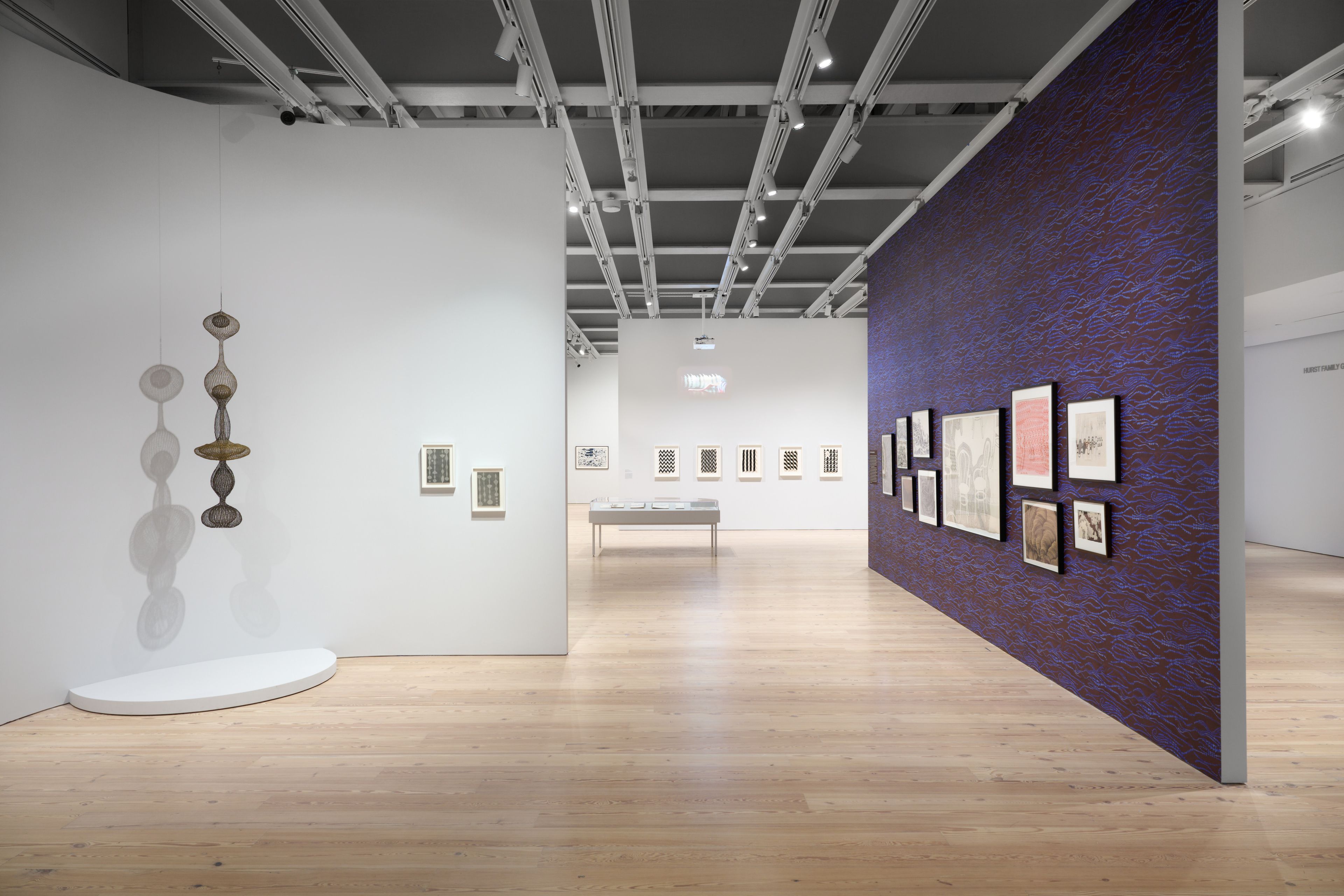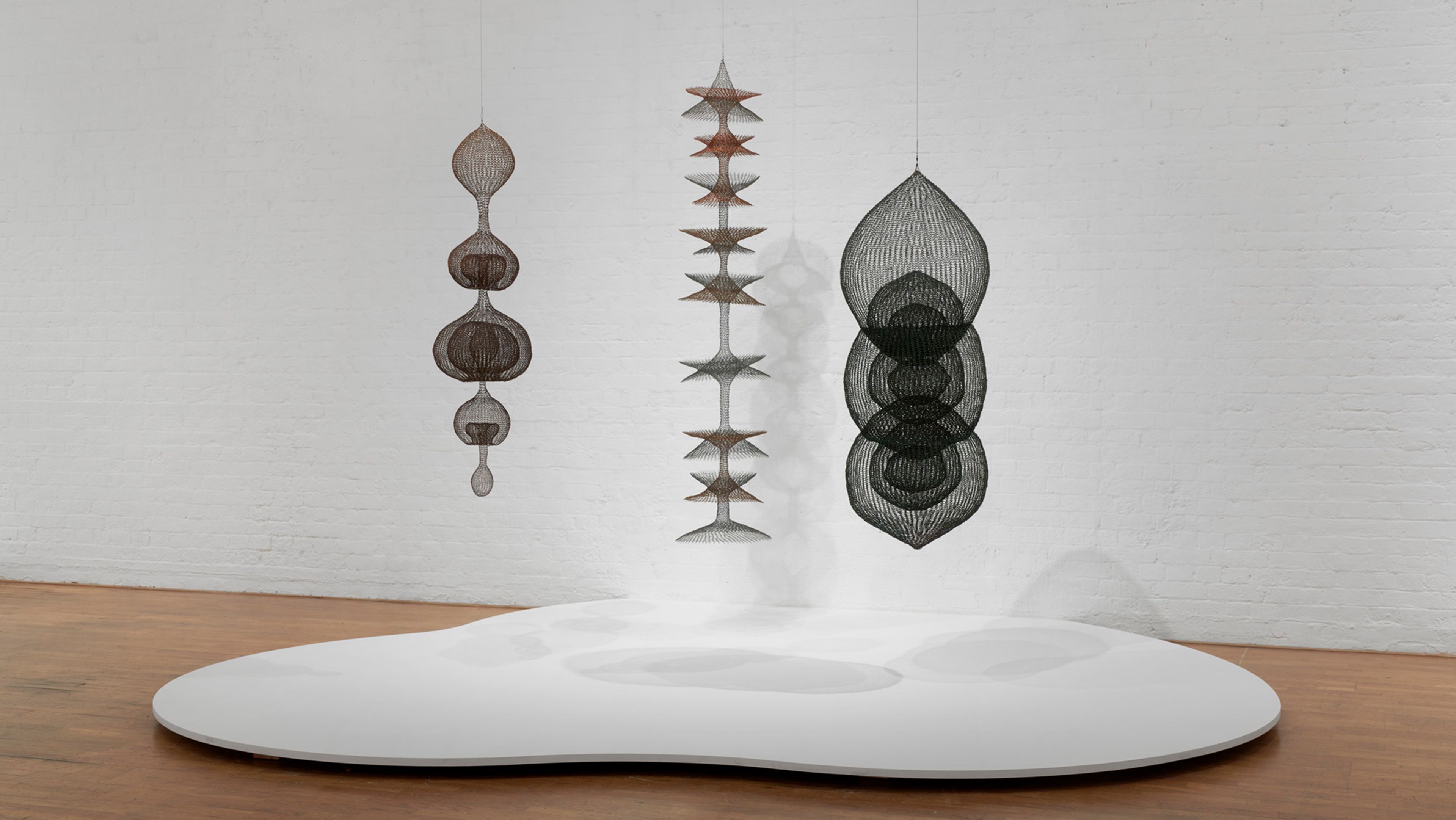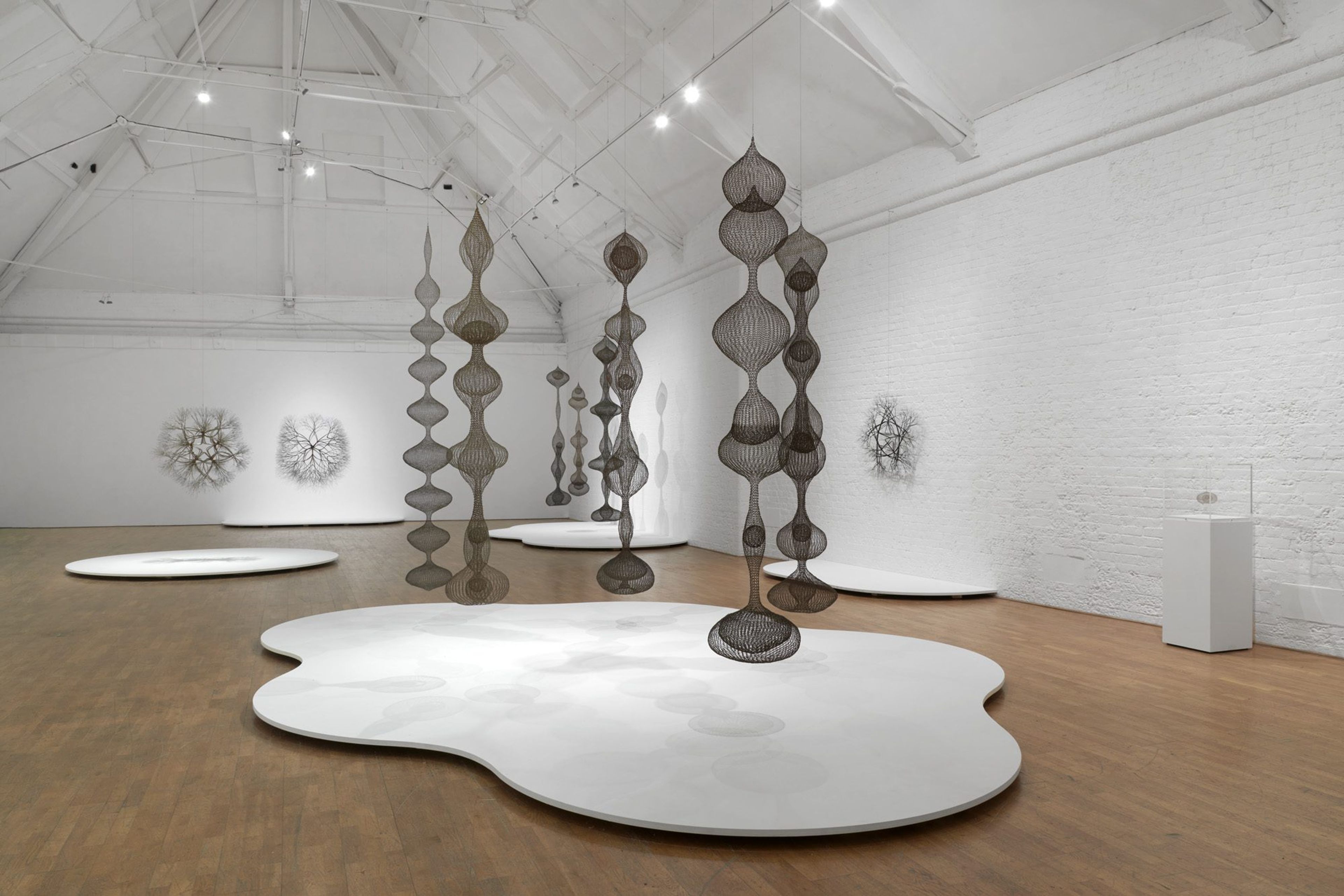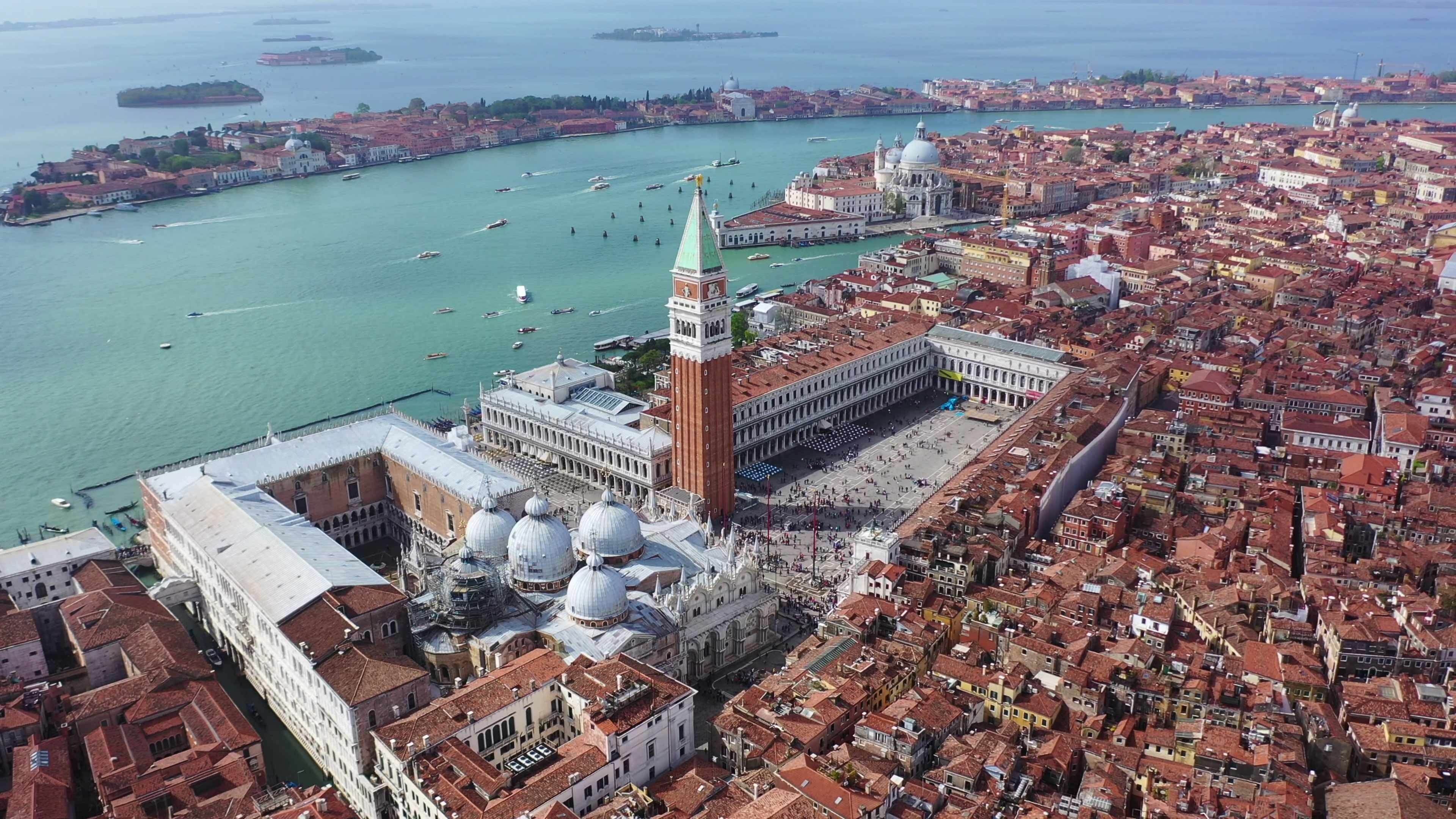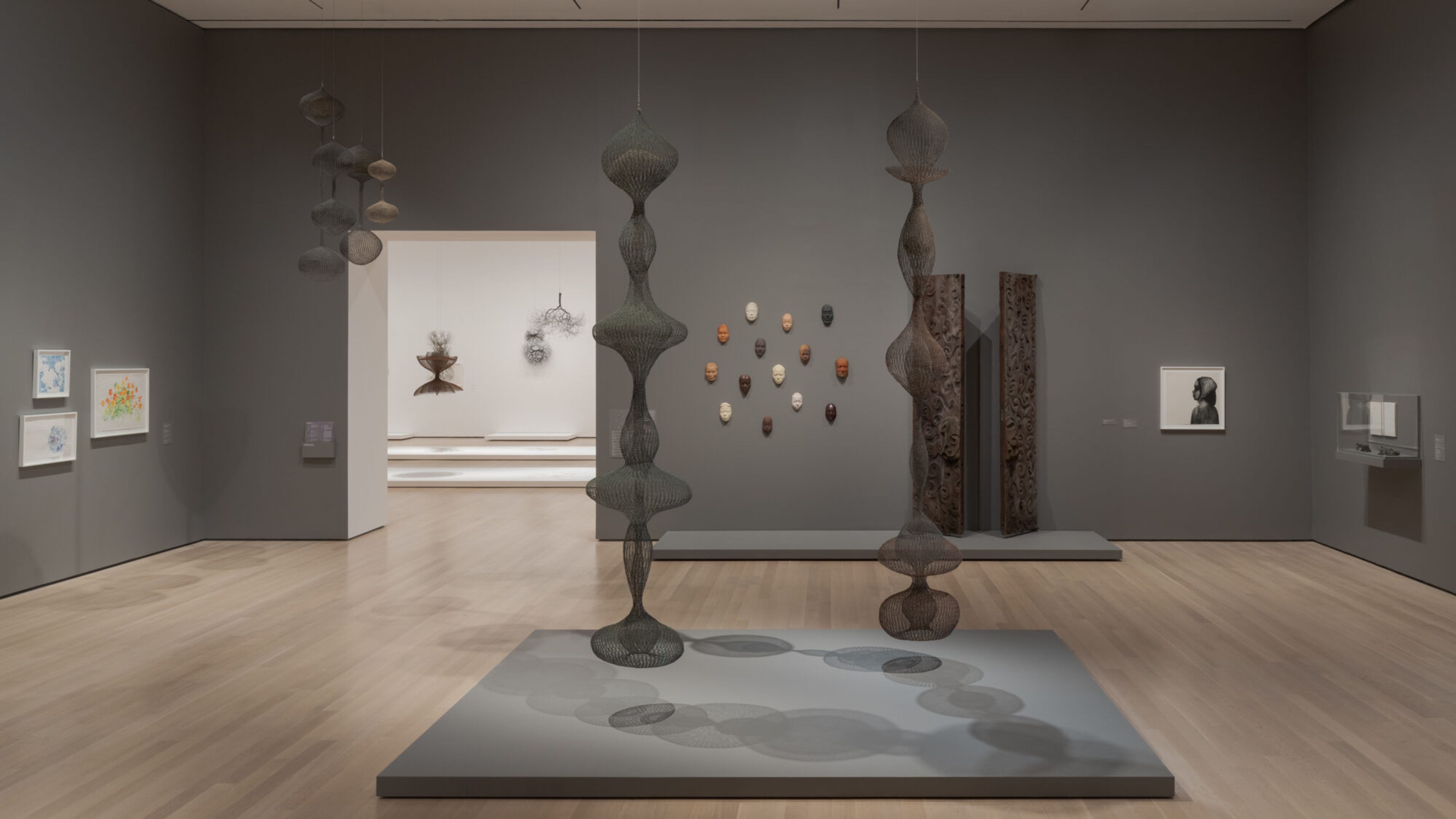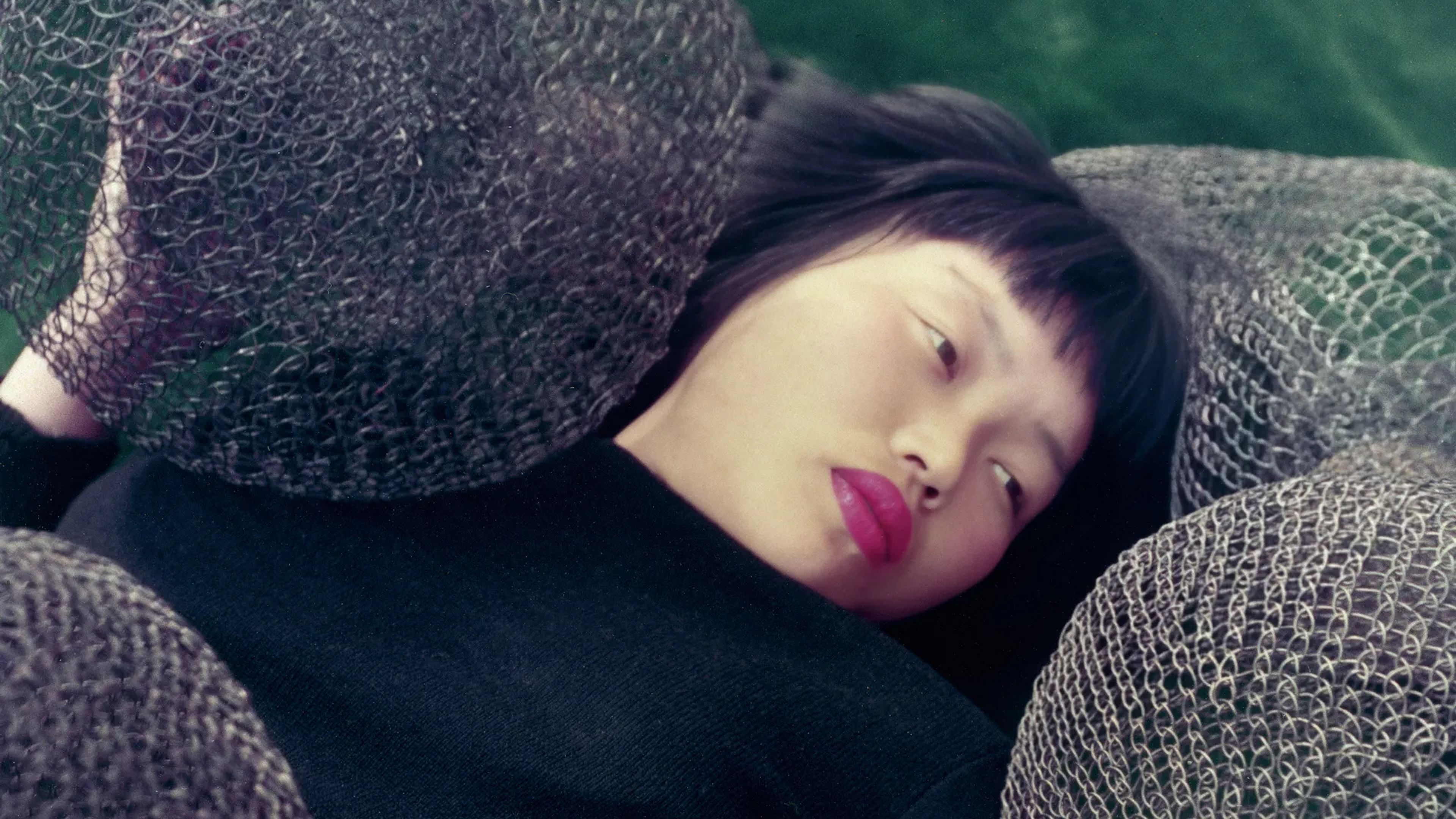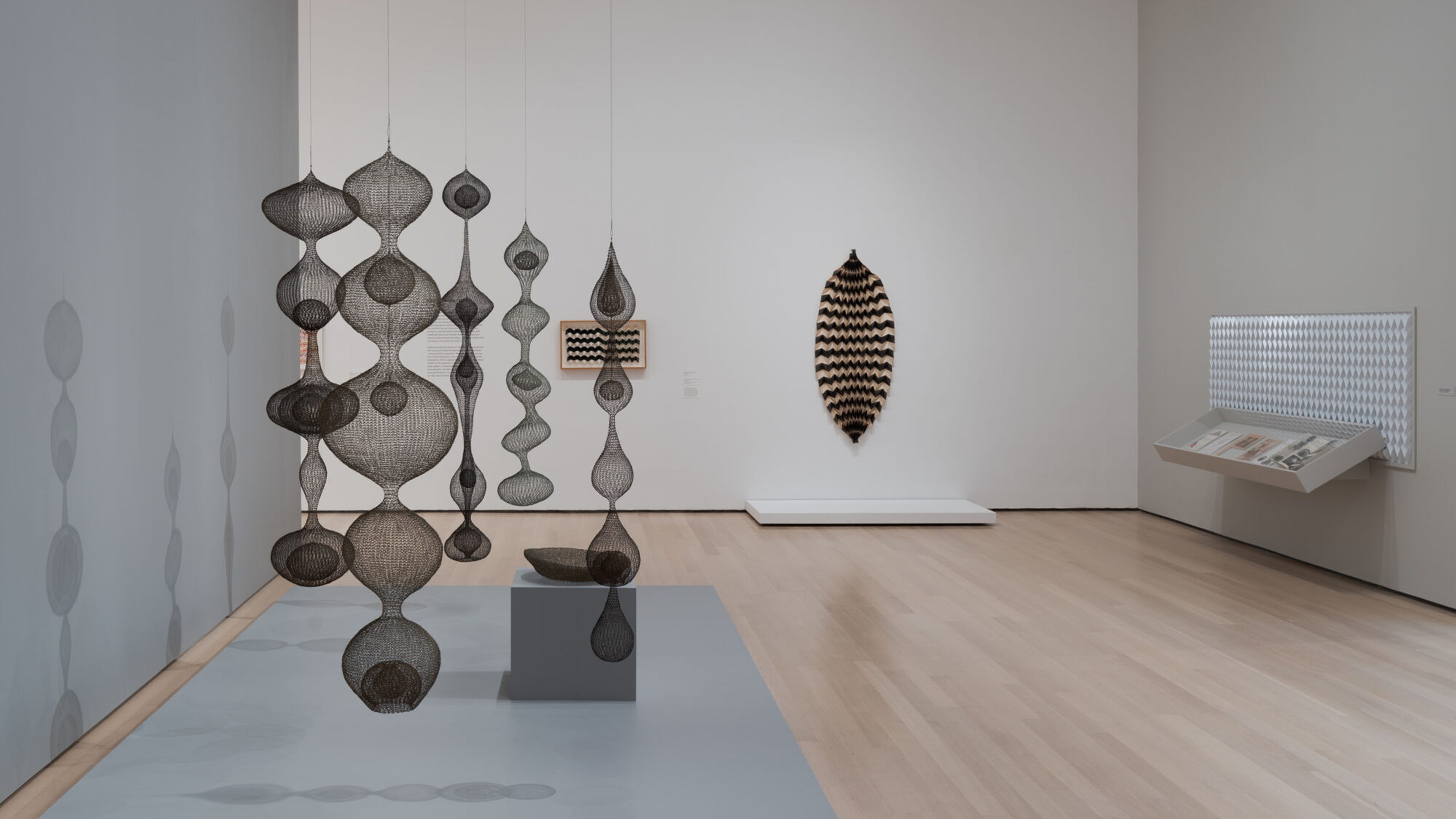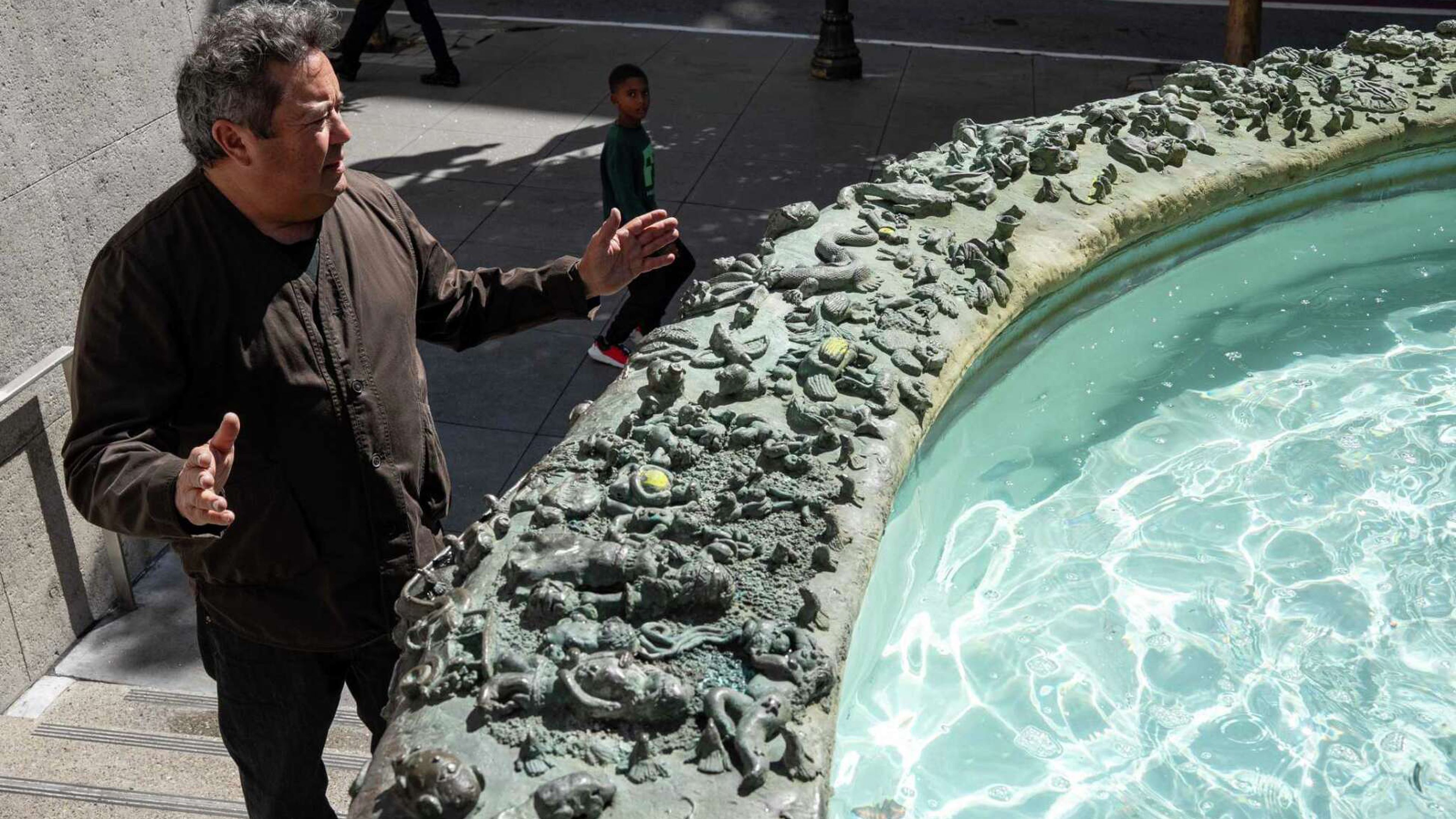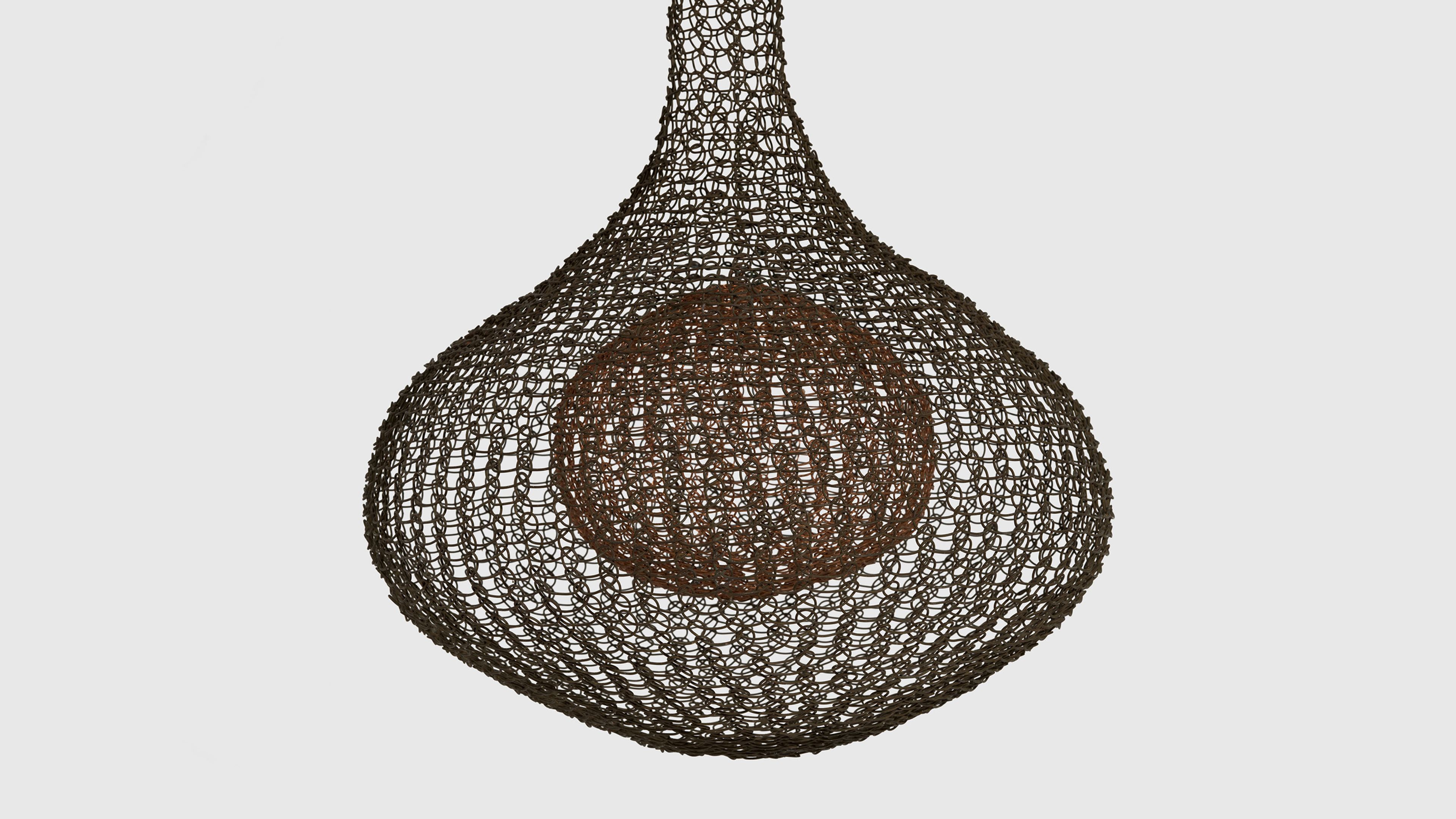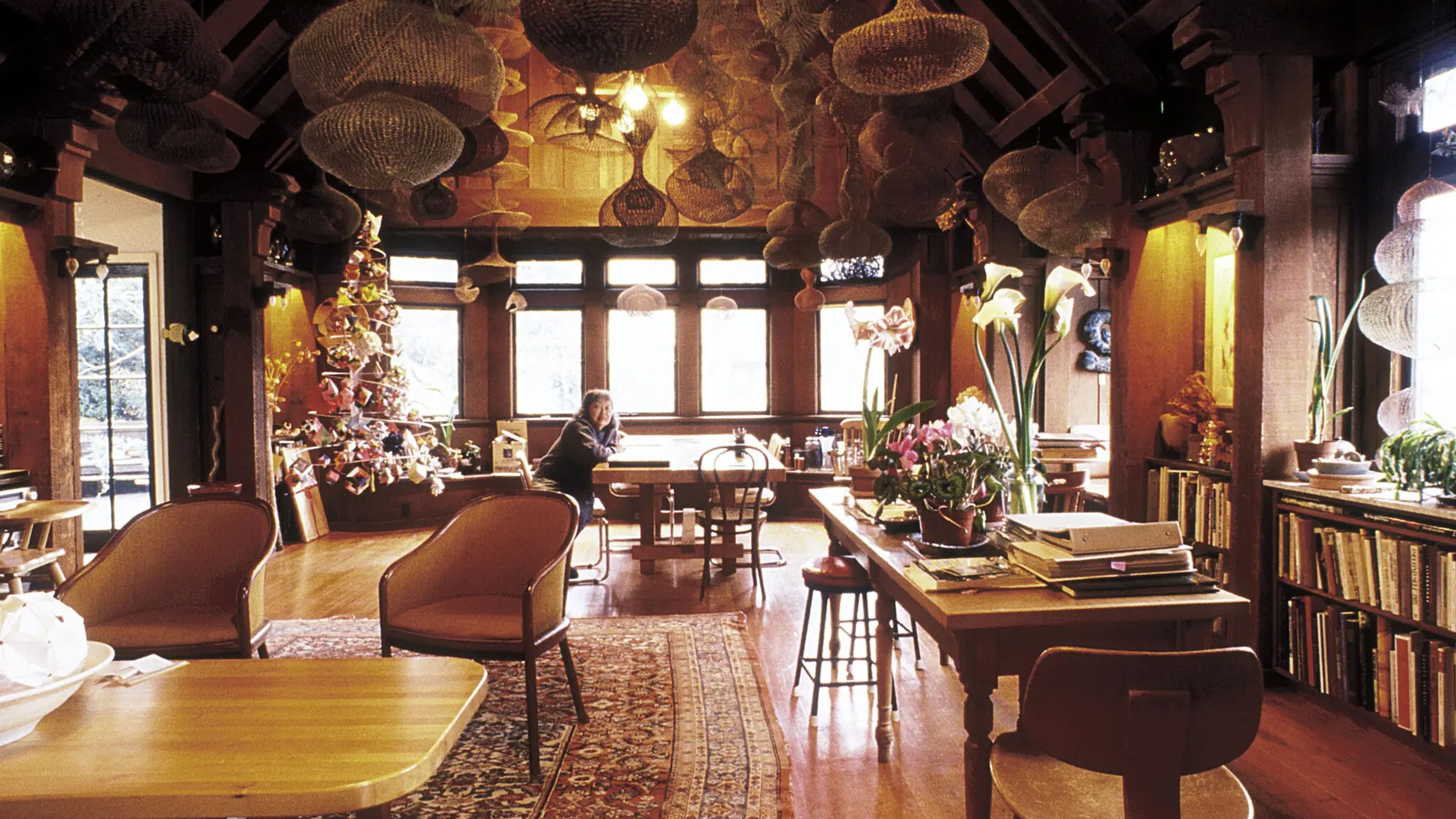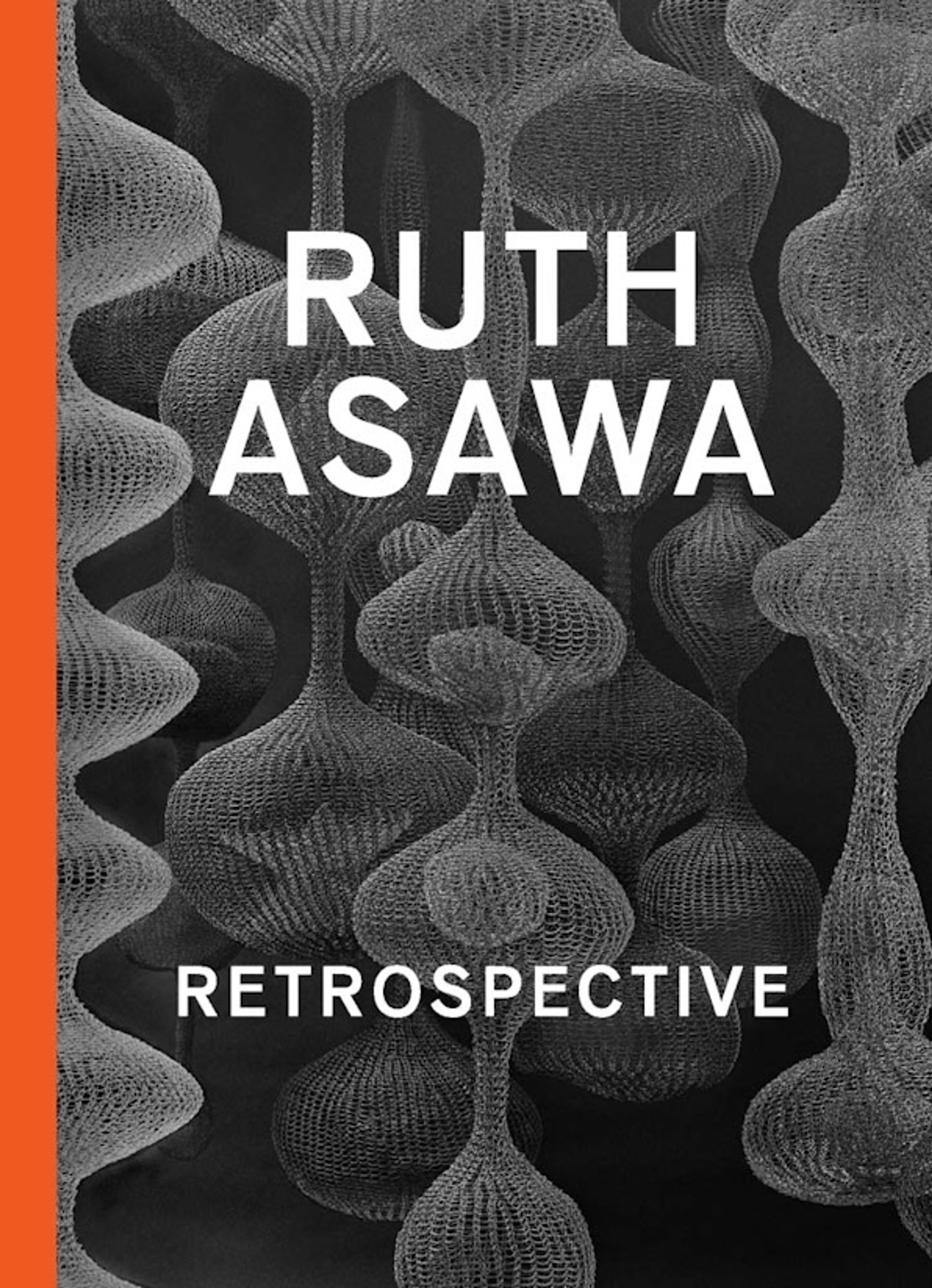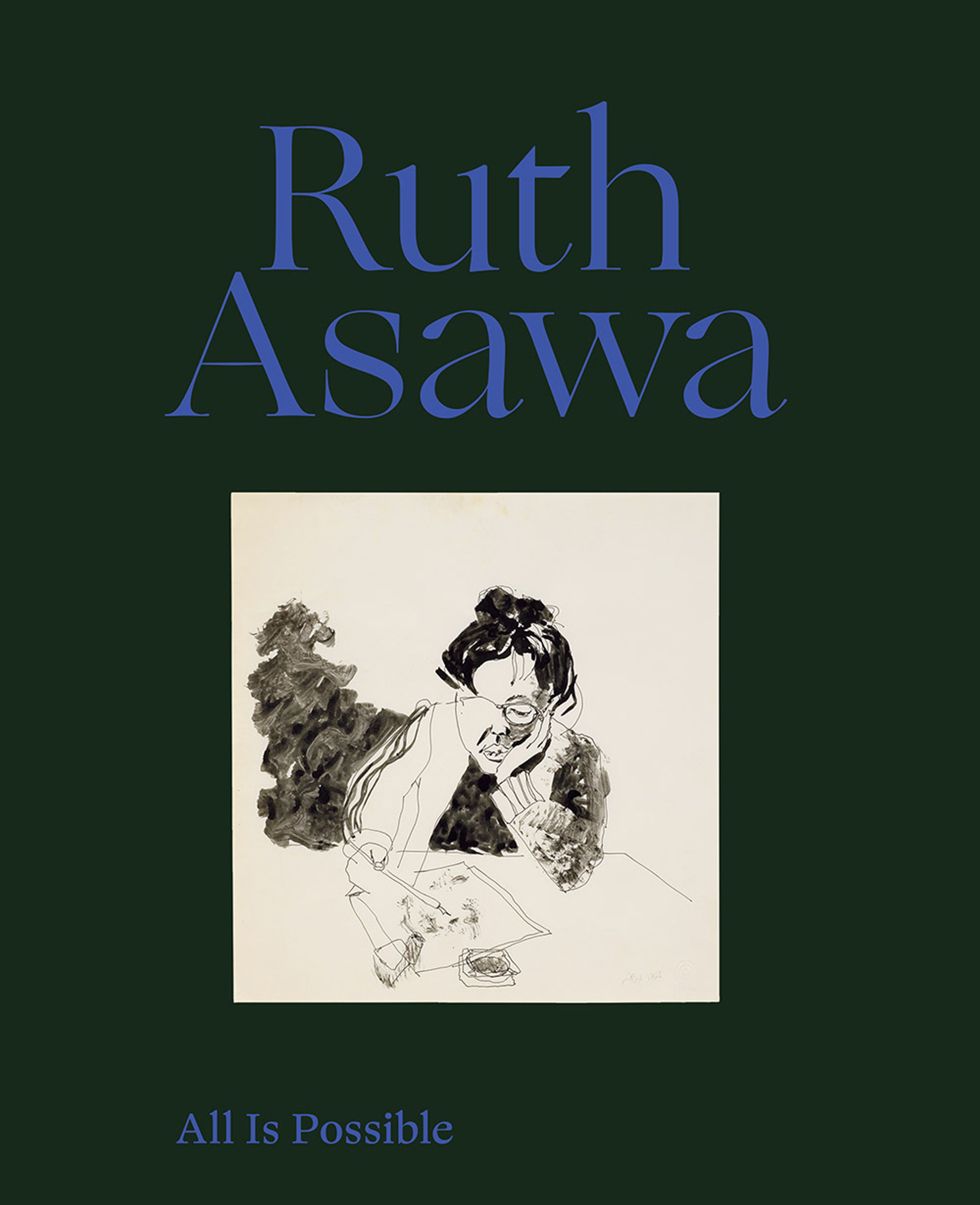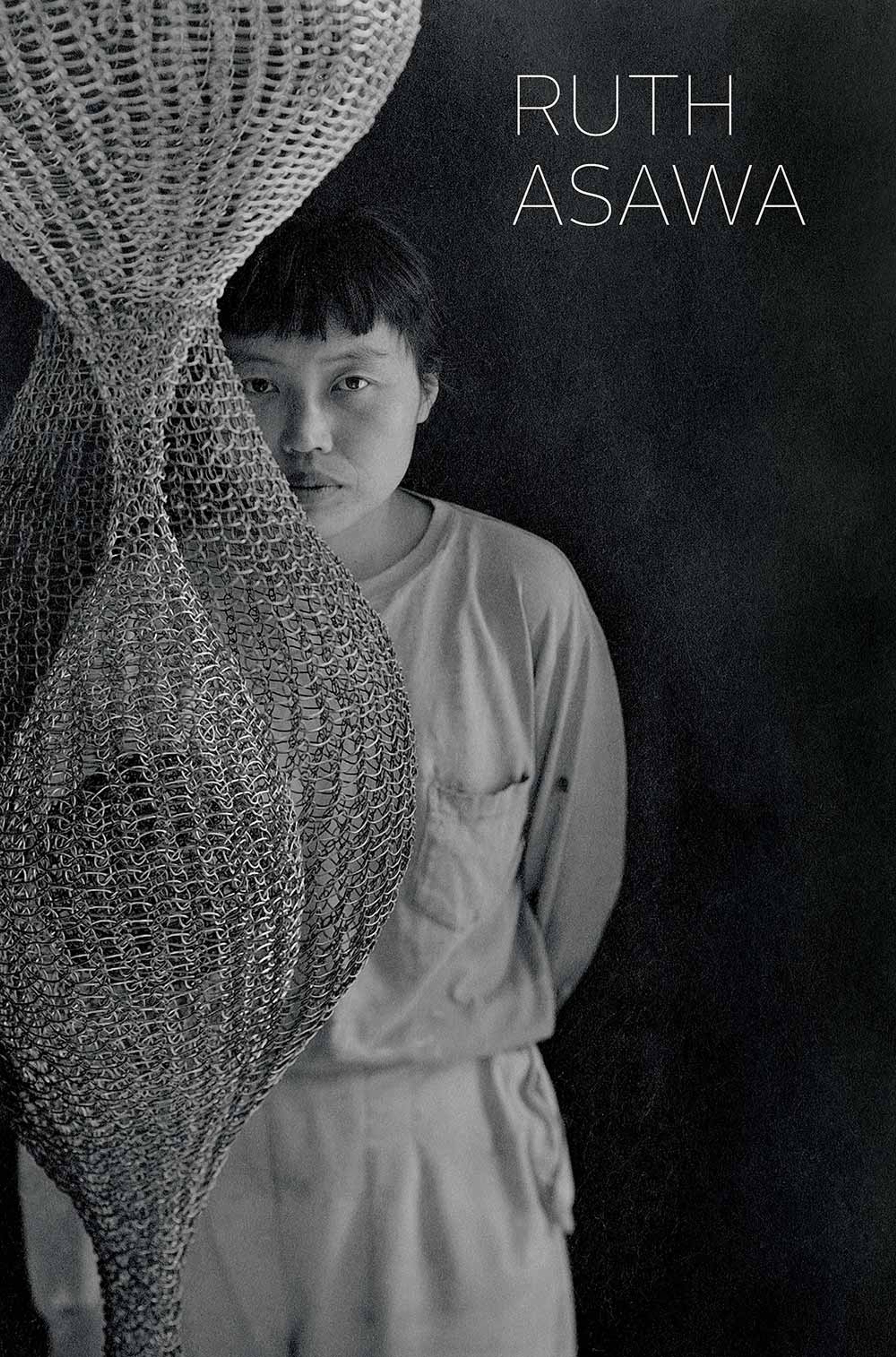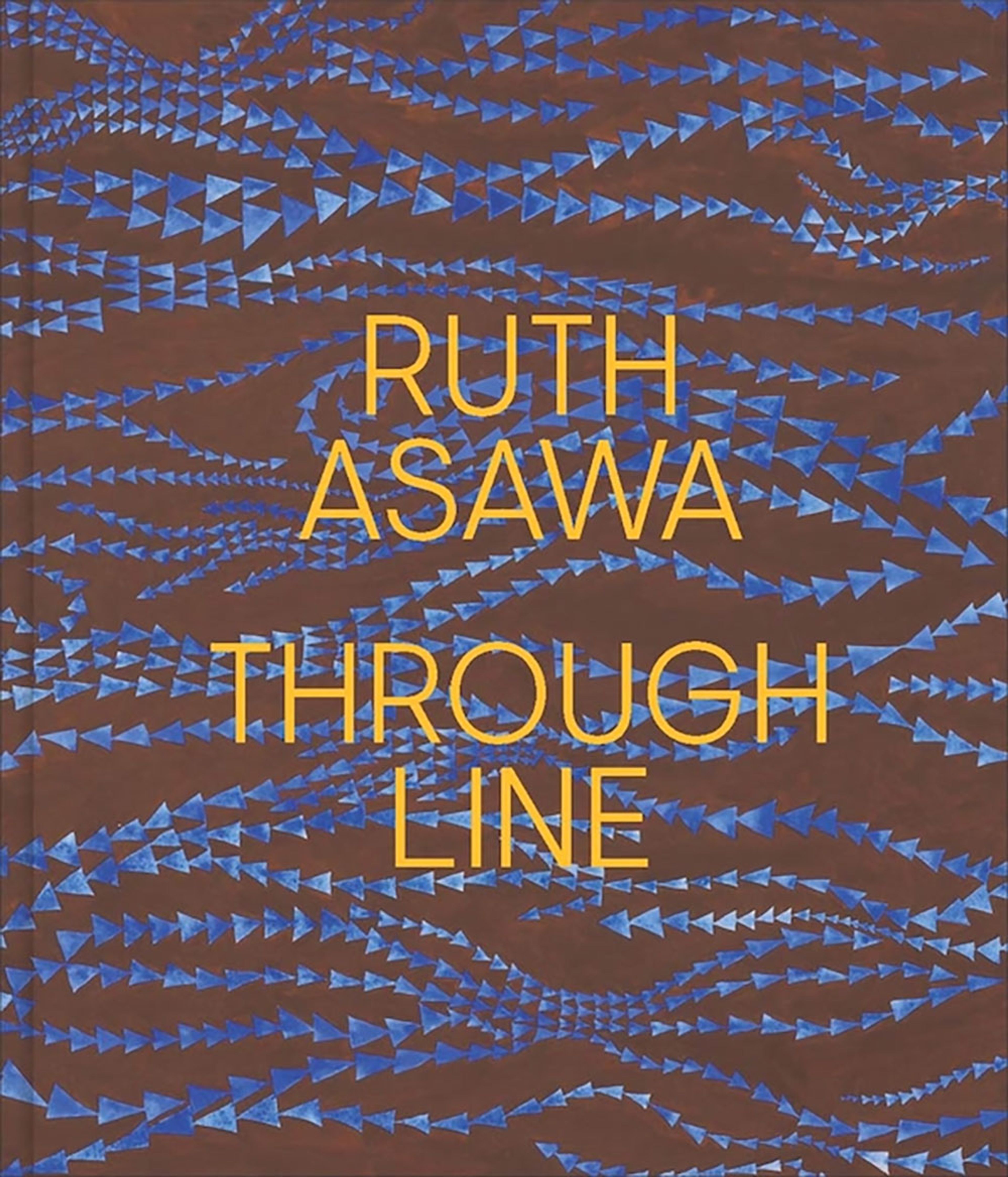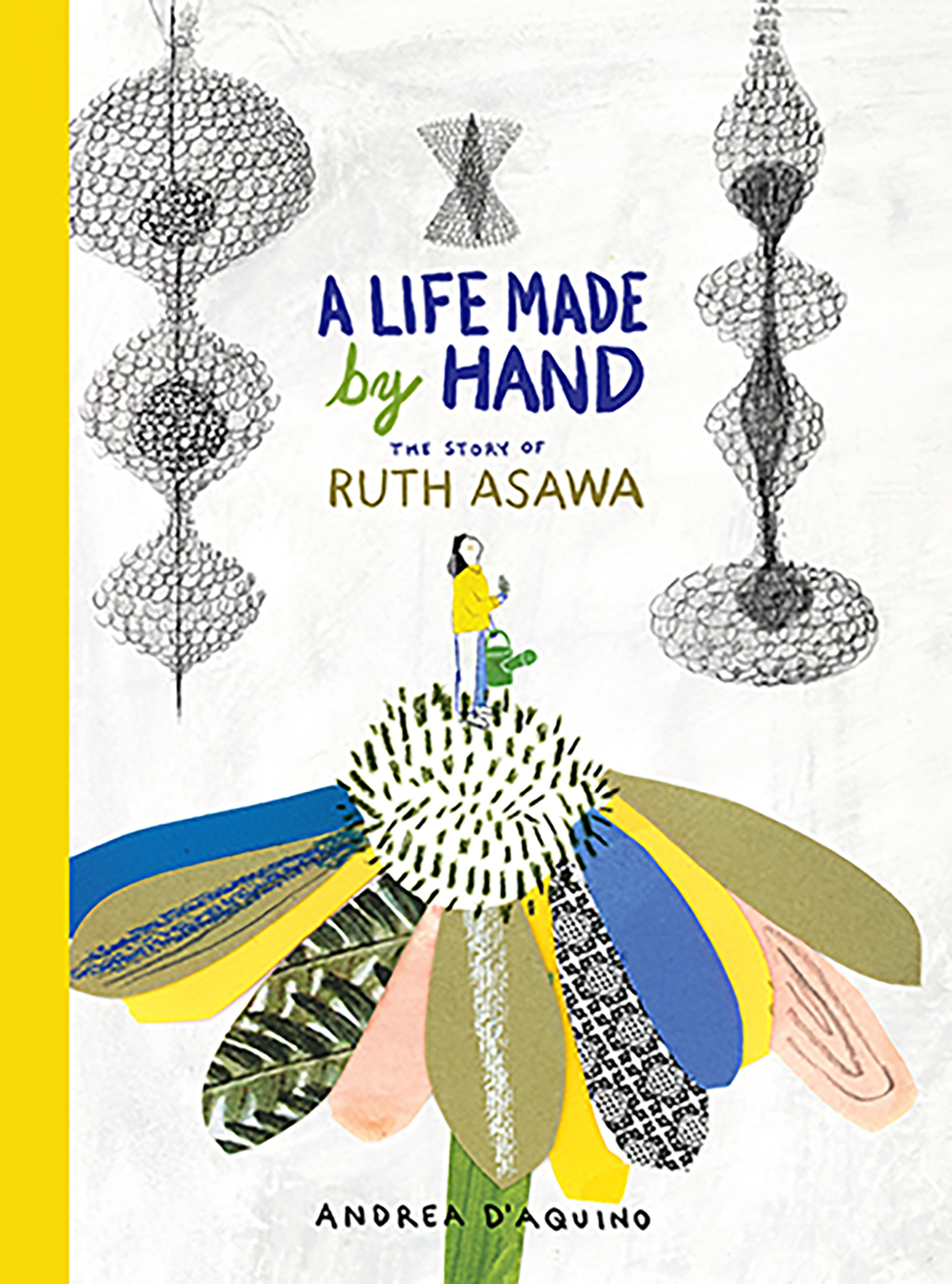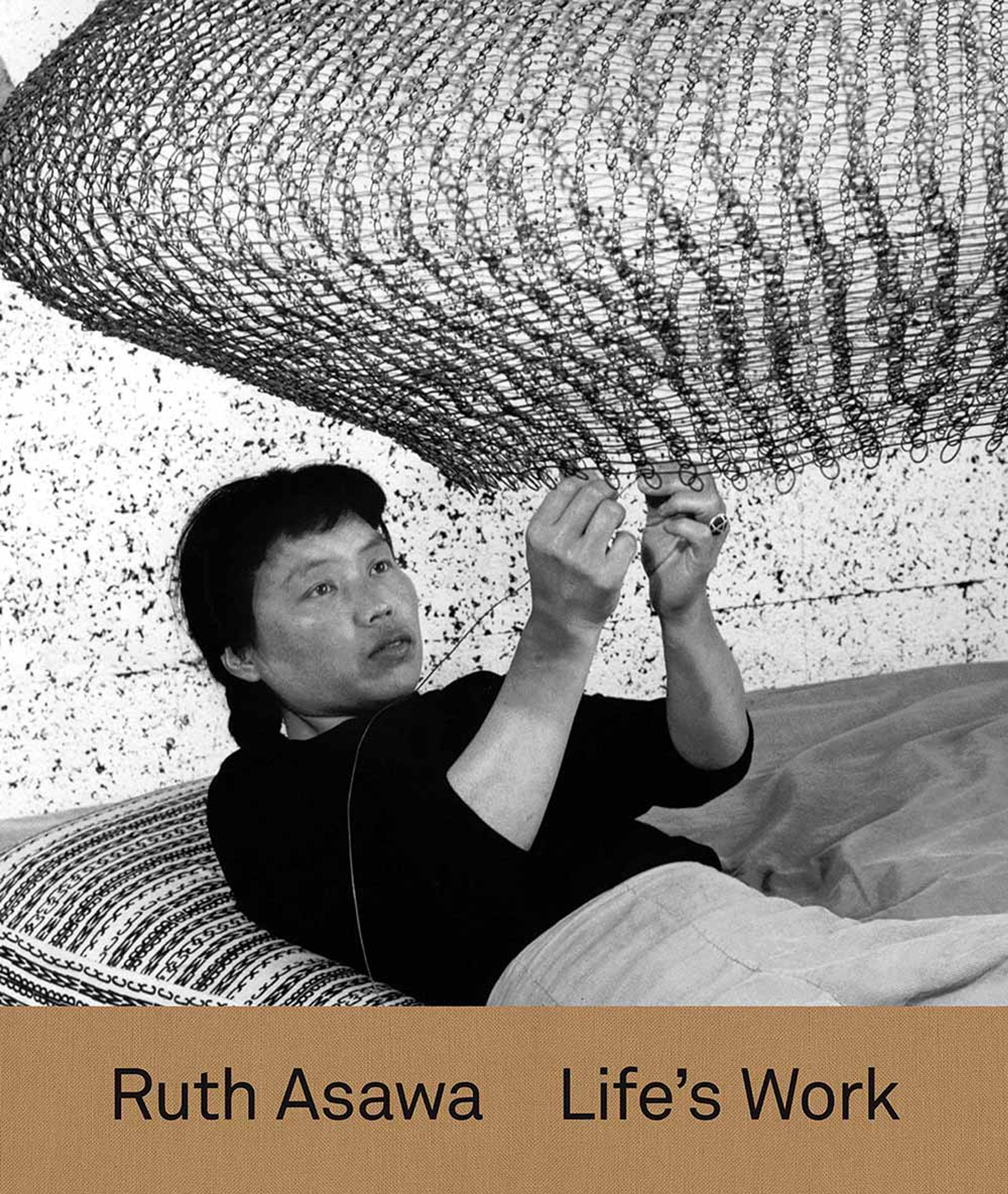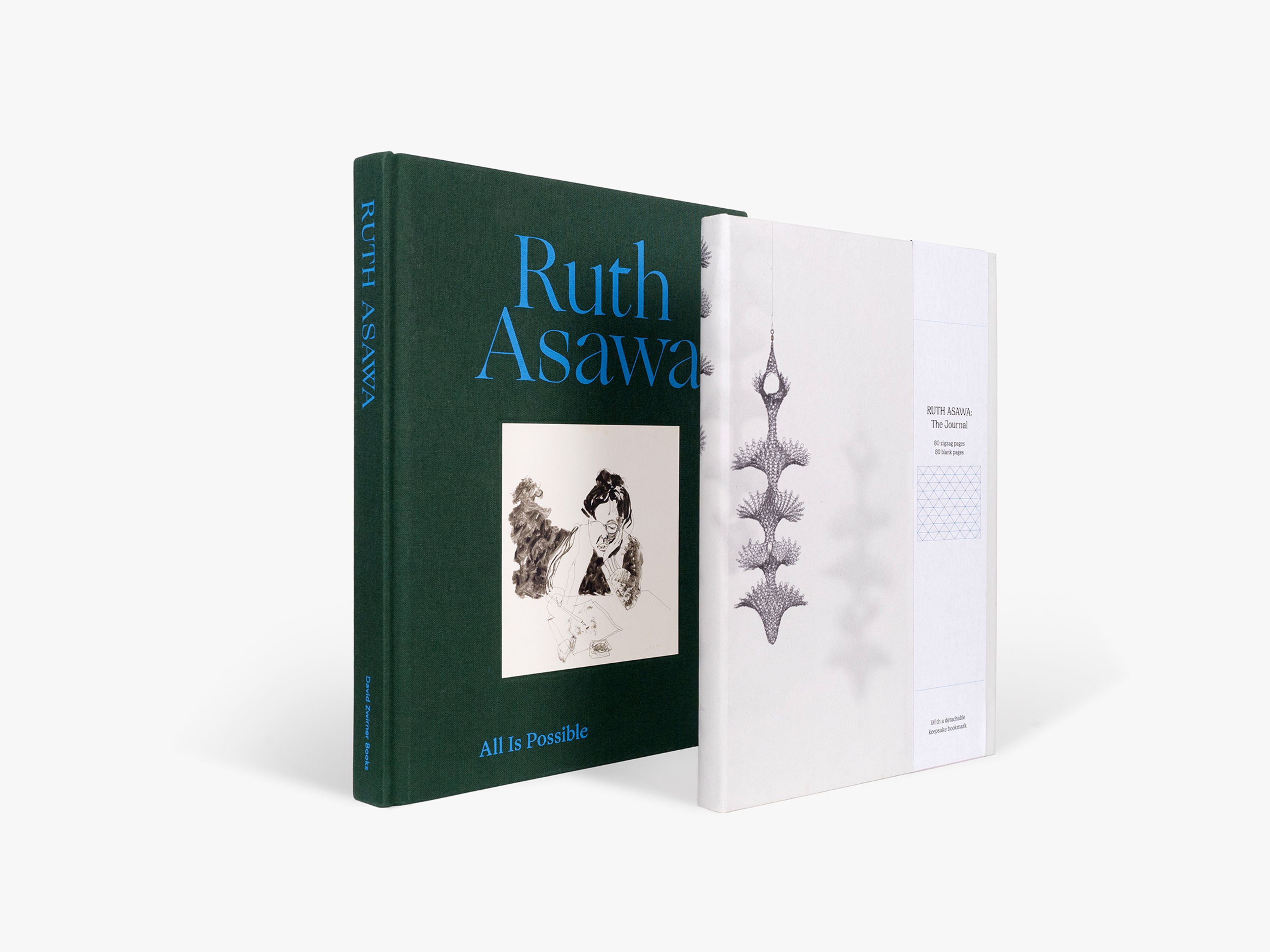Ruth Asawa
American artist, educator, and arts advocate Ruth Asawa (1926–2013) is known for her extensive body of wire sculptures that challenge conventional notions of material and form through their emphasis on lightness and transparency. Over the course of more than a half century, Asawa created a cohesive body of sculptures and works on paper that, in their innovative use of material and form, deftly synthesizes a wide range of aesthetic preoccupations at the heart of postwar art in America.
Learn More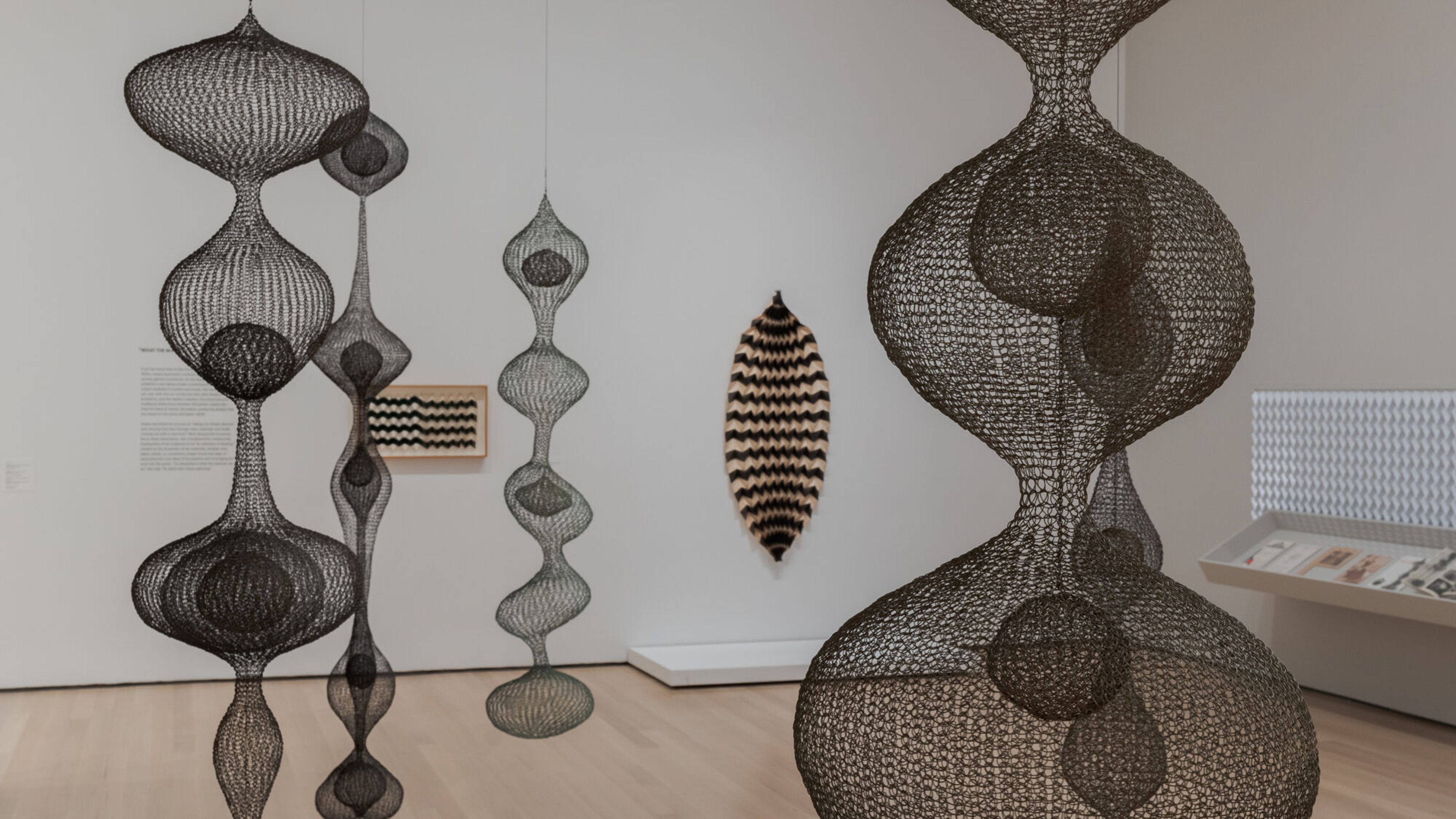
Ruth Asawa: A Retrospective
Explore the artist's major career-spanning exhibition on view from October 19, 2025 — February 7, 2026 at The Museum of Modern Art, New York.
Survey
Available Artworks
Exhibitions

Explore Exhibitions
Artist News
Biography

Ruth Asawa with hanging wire sculpture, 1951. Photo © Imogen Cunningham Trust
American artist, educator, and arts advocate Ruth Asawa (1926-2013) is known for her extensive body of wire sculptures that challenge conventional notions of material and form through their emphasis on lightness and transparency. Born in rural California, Asawa first studied under professional artists while her family and other people of Japanese descent were detained at Santa Anita, California, in 1942. Following her release from an incarceration camp in Rohwer, Arkansas, sixteen months later, she enrolled in 1943 in Milwaukee State Teachers College. Unable to receive her degree due to continued hostility against Japanese Americans, Asawa left Milwaukee in 1946 to study at Black Mountain College in North Carolina, then known for its progressive pedagogical methods and avant-garde aesthetic environment. Asawa's time at Black Mountain proved formative in her development as an artist, and she was particularly influenced by her teachers Josef Albers, Buckminster Fuller, and the mathematician Max Dehn. She also met architectural student Albert Lanier, whom she would marry in 1949 and with whom she would raise a large family and build a career in San Francisco. Asawa continued to produce art steadily over the course of more than a half century, creating a cohesive body of sculptures and works on paper that, in their innovative use of material and form, deftly synthesizes a wide range of aesthetic preoccupations at the heart of postwar art in America.
Asawa’s work has been exhibited widely since the early 1950s, including early solo exhibitions at Peridot Gallery, New York in 1954, 1956, and 1958. In 1965, Walter Hopps organized a solo exhibition of the artist’s sculptures and drawings at the Pasadena Art Museum (now the Norton Simon Museum) in California, where Asawa completed a residency at the Tamarind Lithography Workshop the same year. Other solo presentations include those held at the San Francisco Museum of Art (1973); Fresno Art Museum, California (2001; traveled to Oakland Museum of California through 2002); de Young Museum, San Francisco (2006); Amon Carter Museum of American Art, Fort Worth, Texas (2012); and the Norton Simon Museum of Art, Pasadena, California (2014).
In 2018 to 2019, the Pulitzer Arts Foundation in St. Louis presented the major museum exhibition Ruth Asawa: Life’s Work. An accompanying catalogue published by the Pulitzer Arts Foundation and Yale University Press includes essays by Aruna D’Souza, Helen Molesworth, and Tamara H. Schenkenberg. The two-person exhibition, Lineage: Paul Klee and Ruth Asawa was on view at the San Francisco Museum of Modern Art in 2021. In 2022, Ruth Asawa: Citizen of the Universe was on view at Modern Art Oxford, England, and later traveled to the Stavanger Kunstmuseum, Norway. In September 2023, Ruth Asawa: Through Line, a solo presentation of the artist’s work, opened at the Whitney Museum of American Art, New York, and traveled to the Menil Drawing Institute, Houston, in 2024.
The first international institutional and posthumous survey of the artist’s work, Ruth Asawa: Retrospective, was presented at the San Francisco Museum of Modern Art in 2025. The exhibition is currently on view at The Museum of Modern Art, New York, and will travel to the Guggenheim Bilbao, Spain, and Fondation Beyeler, Riehen/Basel, Switzerland, through January 2027. The accompanying catalogue, edited by the retrospective's curators, Janet Bishop and Cara Manes, contains new scholarship on the artist.
The artist’s works have also been included in significant group exhibitions, including Leap Before You Look: Black Mountain College 1933–1957, Institute of Contemporary Art, Boston (2015; traveled to Hammer Museum, Los Angeles, and Wexner Center for the Arts, Columbus, Ohio, through 2017); America Is Hard to See, Whitney Museum of American Art, New York (2015); Revolution in the Making: Abstract Sculpture by Women, 1947–2016, Hauser & Wirth, Los Angeles (2017); Making Space: Women Artists and Postwar Abstraction, The Museum of Modern Art, New York (2017); The Pencil Is a Key: Drawings by Incarcerated Artists, The Drawing Center, New York (2019); and In a Cloud, in a Wall, in a Chair: Six Modernists in Mexico at Midcentury, Art Institute of Chicago (2019). A selection of the artist's work was presented at the 59th Venice Biennale, The Milk of Dreams (2022).
In addition to her wire sculptures, Asawa is well known for her public commissions, particularly in San Francisco and the wider Bay Area. These include the much beloved Andrea fountain in Ghirardelli Square (1966-1968) and the San Francisco Fountain outside the Grand Hyatt Union Square (1970-1973), the latter of which includes hundreds of baker’s clay images molded by local schoolchildren, friends, and other artists cast in bronze.
Upon moving to San Francisco in 1949, Asawa, a firm believer in the radical potential of arts education from her time at Black Mountain College, devoted herself to expanding access to art-focused educational programs. She co-founded the Alvarado School Arts Workshop in 1968 and was instrumental in the creation of the first public arts high school in San Francisco in 1982, which was renamed the Ruth Asawa San Francisco School of the Arts in her honor in 2010. Additionally, Asawa served on the California Arts Council, the National Endowment for the Arts, and was a trustee of the Fine Arts Museums of San Francisco. Asawa was awarded a 2022 National Medal of Arts by President Joe Biden in 2024, only the second visual artist to receive this high honor posthumously.
The Estate of Ruth Asawa has been represented by David Zwirner since 2017. The gallery’s inaugural solo exhibition of the artist’s work took place the same year in New York, and was accompanied by an extensive publication that includes texts by Tiffany Bell and Robert Storr and features an illustrated chronology. In 2020, the gallery’s London location presented Ruth Asawa: A Line Can Go Anywhere, which was the first major presentation of the artist’s work outside of the United States. In 2021, Ruth Asawa: All Is Possible, curated by Helen Molesworth, was on view at the gallery’s West 20th Street location in New York. The first solo exhibition of Asawa's work in Greater China, Ruth Asawa: Doing Is Living, was presented at David Zwirner Hong Kong in 2024.
The artist’s work is represented in prominent museum collections, including Crystal Bridges Museum of American Art, Bentonville, Arkansas; de Young Museum, San Francisco; Harvard Art Museums, Cambridge, Massachusetts; J. Paul Getty Museum, Los Angeles; Los Angeles County Museum of Art; The Museum of Modern Art, New York; San Francisco Museum of Modern Art; San Jose Museum of Art, California; Solomon R. Guggenheim Museum, New York; and the Whitney Museum of American Art, New York. Asawa has been the recipient of numerous prestigious awards.








